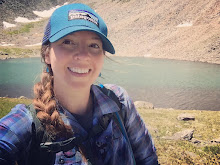Not far from the 25th Avenue gate of the Presidio on California and 21st Avenue is a quaint café filled with musical instruments, artwork and friendly employees. Bazaar Café during the day offers locals a place to drink coffee, grab a bite to eat, socialize or do work via wifi. At night the café offers a wide range of artistic events that draw people in from all over the bay area. “The evening and the daytime are just different dynamics,” said owner Les Wisner.
Wisner and his wife Makiko opened the café in 1998. “My wife is really the heart and soul of the place; she runs it in a business sense and the daytime sort of community aspect of the place. I handle the nighttime and the entertainment aspect,” said Wisner.
There are several unique aspects to the café. All of the music that is played must be original, therefore the café gets a lot of singer /songwriters performers. The Café also puts on a classical series and a cello series. “Cello night is really cool, that is my favorite,” said employee Greg Ivonov.
A creative writing professor at the University of San Francisco lives in the neighborhood and holds her class in café a few times during the semester, allowing the students to read their recent work and things that they are currently working on.
The café also hosts political and fundraising events. “We support candidates for office when they are running,” said Wisner, “not only supporting individual candidates but we will also have debates among a group of candidates.” Fundraising events for causes such as breast cancer treatment, an AIDS walk or raising money for someone in the community are sometimes held in the form of an art auction or musical event.
“Our food is not a typical café fair, it's eclectic,” said Wisner. The menu offers chicken curry, unagi bowls and teriyaki bowls, among other things. Some of the sandwiches are the owners’ own creations.
Outside is a beautiful garden that is the creation of the owners. The area provides a place of patrons to sit on a nice sunny day or to smoke. “We stripped it down, it was bare dirt and we put in everything,” said Wisner. “I don’t think there is garden to match this one.”

